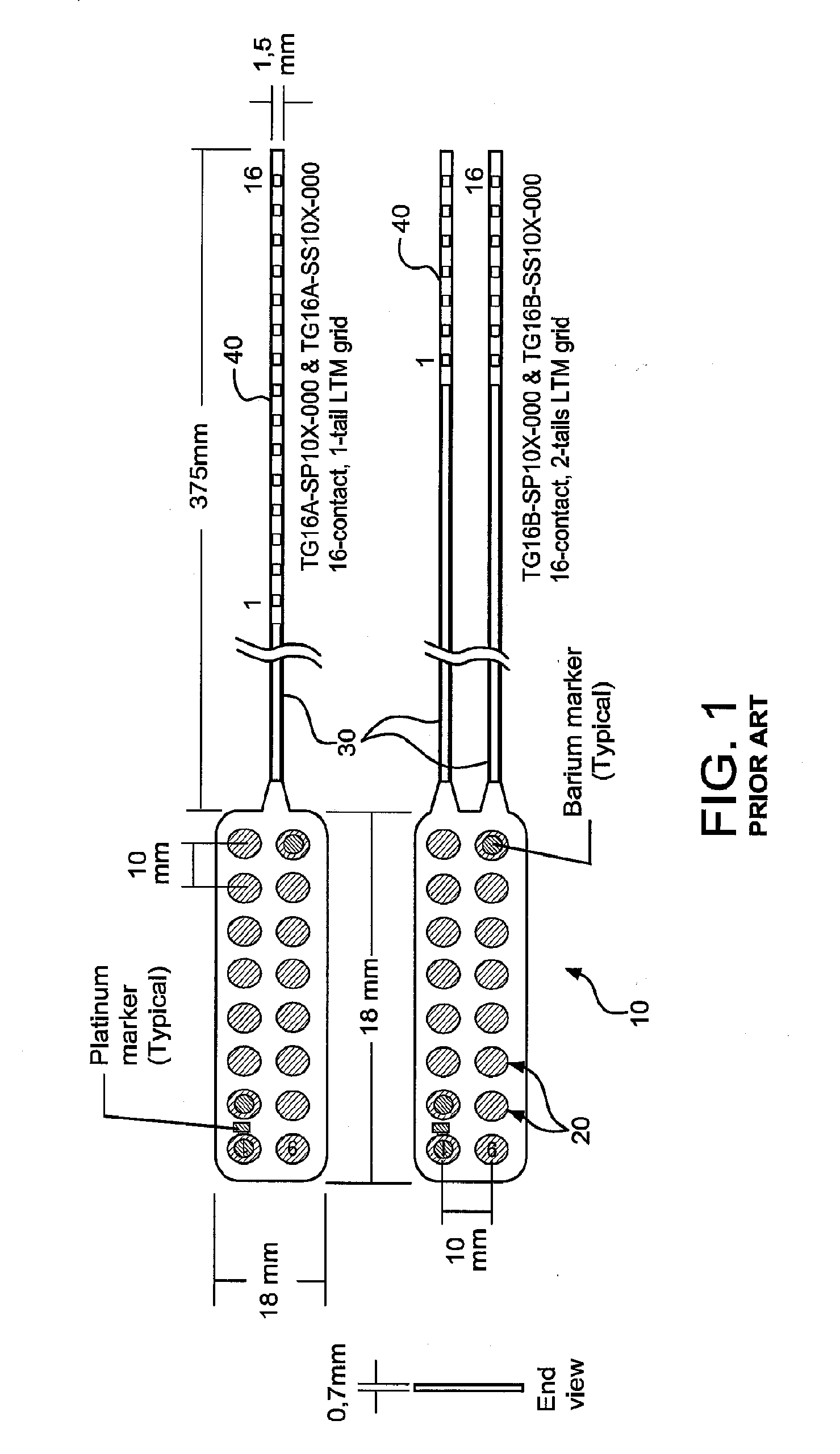Flexible and Scalable Sensor Arrays for Recording and Modulating Physiologic Activity
a sensor array and physiologic activity technology, applied in the field of biological sensor/effector arrays, can solve the problems of insufficient spatial coverage, insufficient amount of spatial coverage for most clinical applications, and difficulty in extending the electrode design to a larger array size, so as to reduce wiring complexity, increase sensor/effector density, and increase the effect of coverag
- Summary
- Abstract
- Description
- Claims
- Application Information
AI Technical Summary
Benefits of technology
Problems solved by technology
Method used
Image
Examples
Embodiment Construction
[0037]A detailed description of illustrative embodiments of the present invention will now be described with reference to FIGS. 1-17. Although this description provides a detailed example of possible implementations of the present invention, it should be noted that these details are intended to be exemplary and in no way delimit the scope of the invention.
[0038]The following definitions will be used throughout this specification:
[0039]Sensor: Any element that can be used to transduce a biological signal into an electrical or other signal. Examples of sensors include: electrical contacts for recording electrophysiological signals, optical detectors for recording light correlates of biological activity, chemical sensors for detecting changes in chemical concentrations or PH (e.g., chloride, neurotransmitters, lactate, glucose, other metabolites, neuro-active compounds, medications, biological substances such as tumor-secreted factors, etc.), devices for measuring temperature, force, a...
PUM
 Login to View More
Login to View More Abstract
Description
Claims
Application Information
 Login to View More
Login to View More - R&D
- Intellectual Property
- Life Sciences
- Materials
- Tech Scout
- Unparalleled Data Quality
- Higher Quality Content
- 60% Fewer Hallucinations
Browse by: Latest US Patents, China's latest patents, Technical Efficacy Thesaurus, Application Domain, Technology Topic, Popular Technical Reports.
© 2025 PatSnap. All rights reserved.Legal|Privacy policy|Modern Slavery Act Transparency Statement|Sitemap|About US| Contact US: help@patsnap.com



